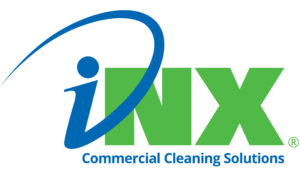Imagine you enter a school. The floors shine, surfaces sparkle, and fresh scents waft. You feel relieved, knowing your child learns in a place prioritizing health and well-being. Now envision dusty classrooms, overflowing trash, and lingering odors. You’d question hygiene standards. Which school would you choose for your child?
Maintaining clean, hygienic school environments isn’t just about aesthetics. It’s crucial for ensuring student and staff health, safety, and academic success. After the pandemic, comprehensive cleaning protocols became essential. From arrival to dismissal, every school space must be diligently cleaned to minimize the spread of germs and illnesses.
But where do schools begin when it comes to developing and implementing effective cleaning protocols? How can they ensure that every nook and cranny, from the bustling cafeteria to the well-trodden sports facilities, remains clean and safe? In this article, we’ll explore robust cleaning plan components and guidance for creating healthy, hygienic learning spaces. So, put on your metaphorical gloves, and let’s get ready to tackle the challenges of keeping our schools clean and safe for all.
Developing a Comprehensive Cleaning Plan
A well-thought-out cleaning plan is key to maintaining a clean school. Start by assessing cleaning needs based on facility size, student population, and high-traffic areas. This assessment prioritizes tasks and allocates resources efficiently.
Next, create a detailed cleaning schedule with daily, weekly, and monthly tasks. Outline specific areas, cleaning frequency, products, and equipment. Assign clear staff responsibilities, ensuring everyone understands their role in upholding cleanliness. Provide regular training and open communication.
Lastly, be sure to conduct routine inspections and audits to monitor cleaning quality. Quickly address any issues to uphold the highest standards. By doing so, you can identify and address any problem areas or potential health hazards before they escalate.
High-Touch Surfaces and Areas
Germs can spread easily through surfaces handled frequently. These high-touch areas include knobs, switches, desktops, chairs, railings, and buttons. Cleaning and disinfecting these surfaces multiple times daily stops germs from spreading. The number of cleanings needed depends on how much the areas are used. For example, classrooms and restrooms require more cleaning than offices.
When cleaning high-touch surfaces, staff should use appropriate cleaning products and techniques. Follow manufacturer instructions for dilution ratios and contact times to ensure the effectiveness of disinfectants. Use microfiber cloths or disposable wipes to avoid cross-contamination, and wear gloves to protect the cleaning staff.
Classroom Cleaning Procedures
Classrooms are the primary learning spaces where students spend a significant portion of their day. Maintaining a clean and orderly classroom environment is crucial for student health and academic performance.
Daily classroom cleaning tasks include:
- Disinfecting desks, chairs, and surfaces
- Emptying waste bins, replacing liners
- Vacuuming or mopping floors thoroughly
- Sanitizing shared items like computers, learning aids
In addition to daily cleaning, schedule weekly and monthly deep cleaning. These tasks include:
- Dusting high surfaces like bookcases and window sills
- Cleaning windows and treatments
- Sanitizing toys, manipulatives, learning materials
- Deep cleaning carpets or floors
Restroom Cleaning and Maintenance
Restrooms are high-risk areas for germ spread, requiring frequent cleaning and maintenance to ensure hygiene and prevent illness.
Clean restrooms multiple times daily, disinfecting high-touch surfaces:
- Toilet seats, flush handles
- Faucets, sinks
- Paper towel dispensers, hand dryers
- Doorknobs, locks
Besides surface cleaning, restocking supplies is crucial. Ensure adequate soap, paper towels, and toilet paper for proper hand hygiene. Regularly check and refill dispensers to avoid shortages.
Promptly address plumbing issues like leaks or clogs to avoid unsanitary conditions and potential water damage. Establish a system for reporting, and responding to maintenance requests for timely resolution.
Cafeteria and Food Preparation Areas
Cafeterias and food preparation areas in schools must stick to strict food safety regulations to prevent foodborne illnesses and ensure the well-being of students and staff. The following measures should be taken to maintain a hygienic environment:
- Clean and disinfect surfaces, utensils, and equipment regularly, with special attention to food contact surfaces like cutting boards, countertops, and serving lines. Clean and sanitize these surfaces before and after each use.
- Use appropriate food-grade cleaning products and follow proper sanitation procedures.
- Implement a regular cleaning schedule for floors, walls, and other surfaces in the cafeteria and kitchen areas.
- Clean and sanitize tables and chairs between meal services to minimize the spread of germs.
Proper waste management is also essential for maintaining a safe and hygienic environment:
- Empty trash bins regularly and dispose of garbage in sealed containers to prevent pest infestations.
- Implement recycling and composting programs to reduce waste and promote environmental sustainability.
Following these tips keeps cafeterias and kitchens clean and safe. This gives students and staff a good, healthy place to learn.
Gymnasium and Sports Facilities
Maintaining cleanliness and sanitation in gymnasiums and sports facilities requires specific cleaning measures. Students, staff, and visitors all play a role in ensuring a safe, clean environment for athletic activities.
First, it’s crucial to clean and disinfect equipment like benches, mats, and weights after each use. Providing disinfectant wipes or spray bottles, along with disposable towels at designated stations, allows users to thoroughly clean exercise equipment.
Additionally, schools should encourage good hygiene practices among students and faculty members when using gym facilities. This includes wiping down equipment and washing hands before and after exercises. Regular cleaning by the school staff is also essential. Locker rooms and showers should undergo daily cleaning to prevent the buildup of bacteria and fungi.
Proper ventilation is another challenge for teachers and cleaning staff. The moist conditions created during sports activities can promote mold growth. Maintaining air quality in a gym requires regular ventilation and clean air intake. The ventilation system should be monitored and maintained to ensure a continuous supply of fresh air.
By implementing a rigorous cleaning and maintenance routine for gymnasiums and sports facilities, schools can promote a healthy, safe environment for physical activity and athletics, fostering a positive experience for all.
Indoor Air Quality and Ventilation
Keeping good air quality inside matters for students and staff—it’s important for their health and feeling comfortable. Poor air can make issues like breathing problems and allergies worse:
- Maintain your heating, ventilation and air conditioning (HVAC) systems by having them inspected by a professional and cleaned regularly. Refer to your owner’s manual for recommended maintenance frequency.
- Check and replace air filters regularly, at least as recommended by the filter manufacturer (some recommend monthly filter changes). Select high-efficiency filters to catch small particles and allergens.
- Open windows to circulate fresh air when weather permits. Fresh air helps to dilute indoor air pollutants and contributes to better air quality.
- Use air purifiers in classrooms or areas without adequate windows or filtration to catch airborne particles and contaminants and remove them from the classroom or work area.
Focusing on indoor air quality, and proper ventilation lets schools create healthier environments for learning—promoting student, and staff wellbeing.
Healthier Schools with iNX
The bottom line is that clean and healthy schools benefit everyone. Maintaining hygienic spaces is crucial for student and staff well-being. Proper cleaning protocols reduce germs and illness spread across classrooms, restrooms, and facilities. Implementing effective cleaning processes in every area is vital.
If you need a trustworthy partner for school cleaning, consider iNX. With our extensive experience, customized cleaning plans, and ongoing support, iNX can help you create and maintain a clean, healthy, and safe environment that promotes learning and growth. Take the first step towards a cleaner future for your school by contacting iNX today. Fill out the form below to speak to an iNX Cleaning Expert!


